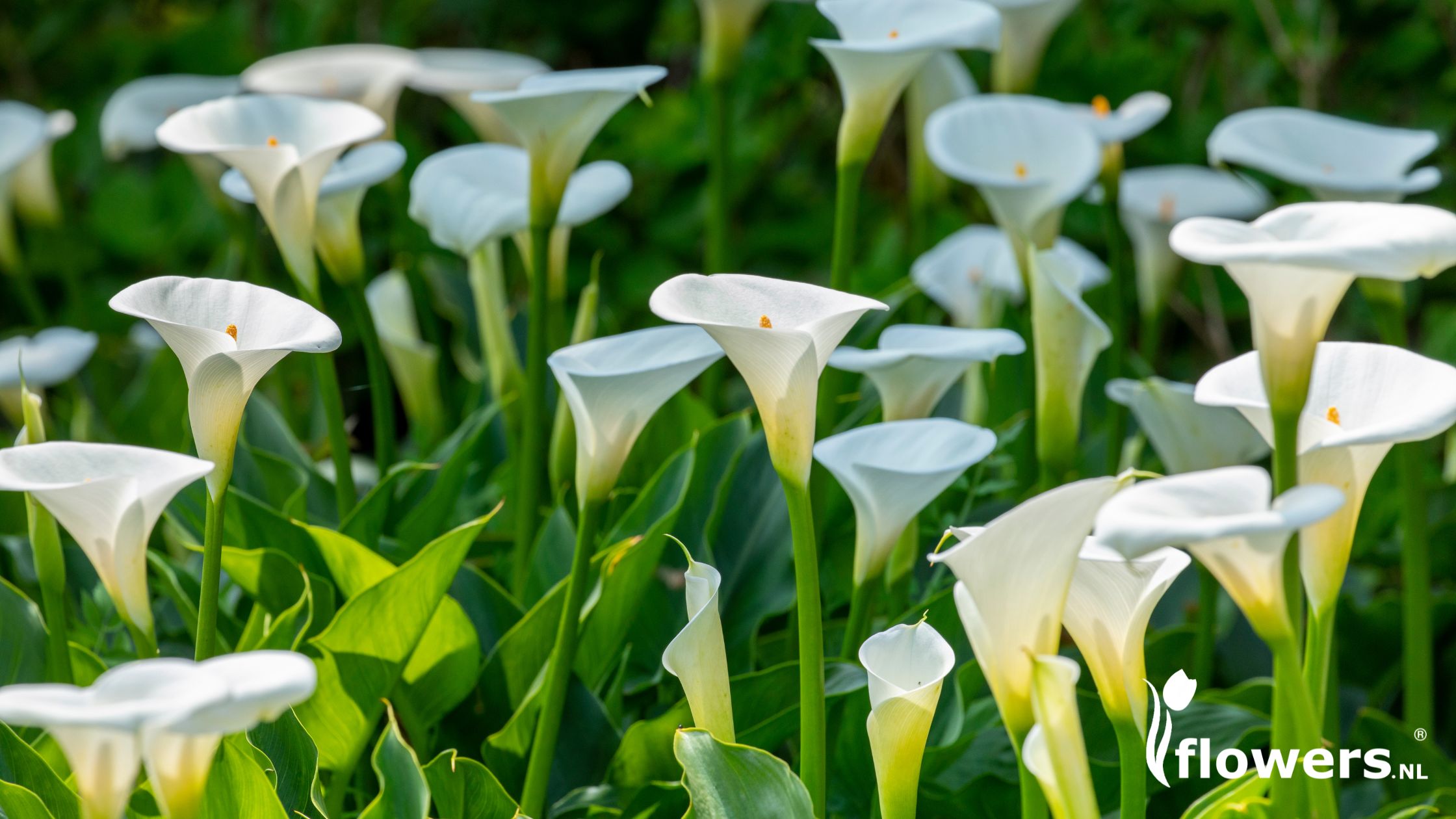Calla - Zanthedeschia

The Sculptural Symbol of Purity and Elegance
Sleek, sculptural, and undeniably elegant — the Calla Lily (Zantedeschia spp.) is a timeless favorite in the world of cut flowers. With its graceful curves and minimalist beauty, the calla lily adds sophistication to everything from bridal bouquets to modern arrangements. Often associated with purity, rebirth, and refinement, this bloom is both a visual statement and a symbol of deeper meaning.
Name and Origin
Common Name: Calla Lily
Scientific Name: Zantedeschia spp.
Despite its name, the Calla Lily is not a true lily. It belongs to the genus Zantedeschia, part of the Araceae family. Native to southern Africa, particularly in regions of South Africa, Swaziland, and Lesotho, the flower grows in moist, marshy areas and is known for its elegant, trumpet-shaped blooms. The name "Zantedeschia" honors Italian botanist Giovanni Zantedeschi, while "Calla" comes from the Greek word kallos, meaning beauty.
Description
The Calla Lily is instantly recognizable for its smooth, trumpet-like bloom that curves around a central yellow spadix. Standing on a tall, straight stem, the flower ranges in height from 30 to 90 centimeters. It comes in a variety of colors — from classic white to pink, yellow, orange, deep burgundy, and even near-black. While the white variety symbolizes purity and innocence, darker hues can convey mystery and elegance.
Calla lilies have little to no scent, making them ideal for scent-sensitive arrangements. Their clean lines and striking presence make them a staple in both traditional and contemporary floral design.
Season
Calla Lilies bloom naturally in late spring to early summer but are available year-round thanks to commercial greenhouse cultivation. This makes them a reliable choice for weddings, events, and decor across all seasons.
Care Tips
With proper care, Calla Lilies can last 7 to 10 days as cut flowers:
- Trim stems at an angle before placing them in a vase.
- Use only a small amount of water in the vase to avoid rotting the stems.
- Remove any foliage below the waterline to prevent bacterial growth.
- Keep them in a cool, shaded place away from heat, direct sun, or fruit.
- Change the water every 2–3 days, trimming the stems slightly each time.
A tall, narrow vase supports the stems well and enhances the flower’s elegant silhouette.
Flower Combinations
Calla Lilies pair beautifully with flowers that contrast their clean form or amplify their elegance. Recommended combinations include:
- Roses – for a romantic, classic bouquet
- Orchids – for a luxurious, exotic touch
- Hydrangeas – to add volume and softness
- Ranunculus – to contrast form and add layers
- Eucalyptus – for texture and modern greenery
History and Symbolism
Calla Lilies have appeared in art and mythology for centuries. In Greek mythology, they were associated with the goddess Hera and symbolized magnificent beauty. During the Art Deco period, the flower became a symbol of modernism and grace, featured widely in sculpture and photography.
In religious traditions, particularly Christianity, the white Calla Lily symbolizes purity and resurrection, often used in Easter services and funeral arrangements. It's also a popular wedding flower for its elegance and simplicity.
Common Uses
The Calla Lily is one of the most versatile cut flowers and is often used in:
- Wedding bouquets and centerpieces
- Sympathy and funeral flowers
- Modern home décor arrangements
- Luxury hotel and corporate event styling
Fun Facts
- The Calla Lily is the birth flower for July.
- It’s often associated with the 6th wedding anniversary.
- Though elegant, the plant is toxic if ingested by pets or humans.
Featured Bouquets
Explore floral arrangements featuring Calla Lilies on Flowers.nl:
- Pure Elegance Arrangement
- Bouquet Christmas Joy
Sources
- Horticultural references and guides
- Botanical encyclopedias
- Various floral industry publications

